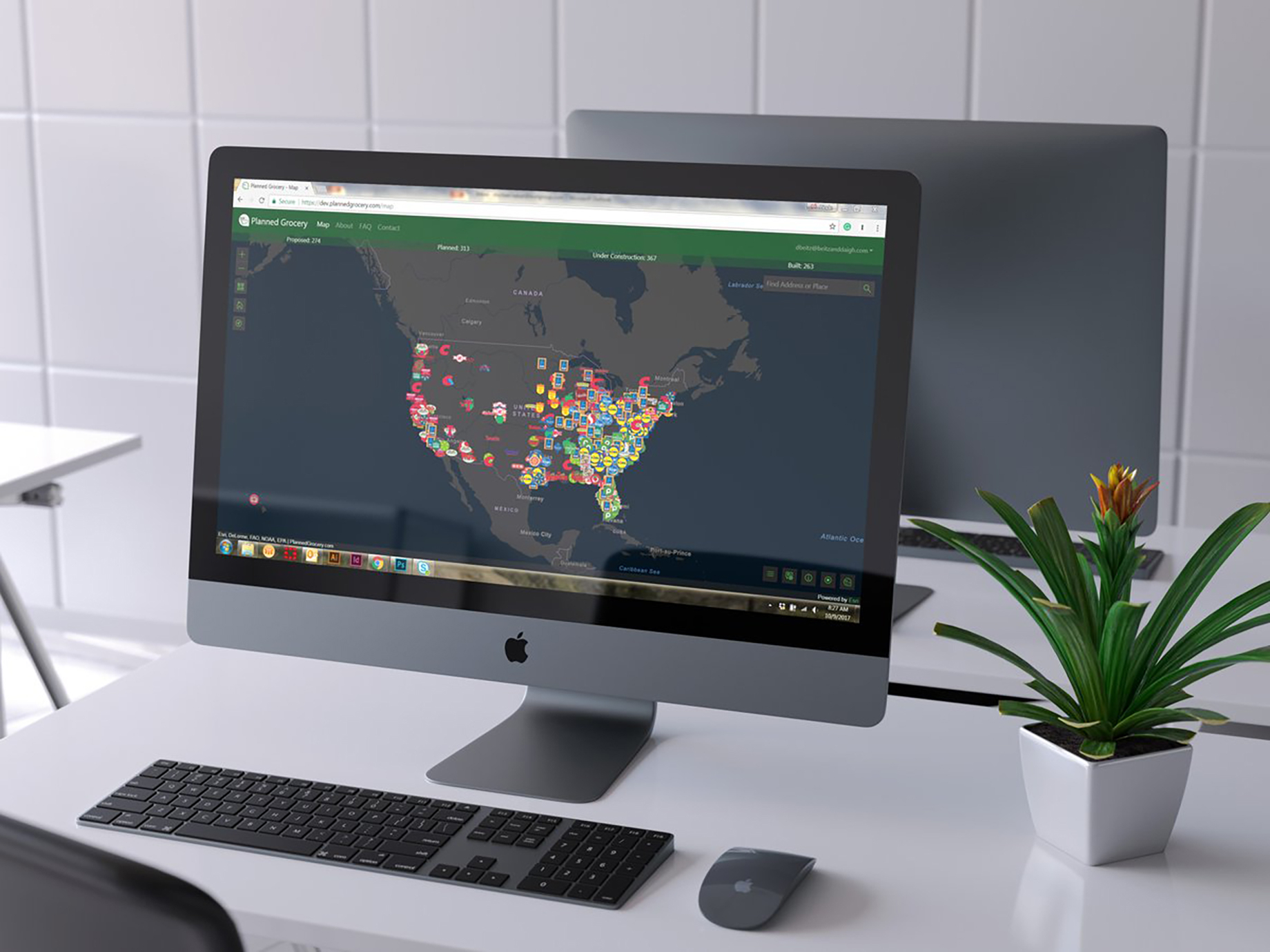Planned Grocery, a new research platform, gives grocery chains and shopping centers more data for monitoring sites and the competition.
Among the challenges in locating and monitoring grocery stores is finding reliable market analysis. Planned Grocery helps grocery chains and shopping center owners by supplying the data they need to make accurate decisions. The web platform is the concept of co-founders Todd Atkins, David Beitz and George Daigh, who operate Columbia, S.C.–based Beitz & Daigh Geographics. Beitz brings years of experience in the grocery-anchored shopping center business, having spent 14 years at Edens, where he managed the geographic-information systems function and worked on location research and marketing.
“Nobody has ever been able to look at the entire United States and see all the planned to proposed grocery-store activity at one time,” said Beitz. “This information is, in my experience, always collected on a market-by-market basis, put on a map in a presentation, and then is never really shared with the organization or updated again.”

The partners came up with their Planned Grocery idea in early 2014 and then spent two years in development. Beitz says the platform enables clients to view and track all the planned grocery retailer activity in the U.S., across the development cycle from proposal to completion. “Every single dot that we add to the database is hand-placed after someone has read a news article or a planning document or something that makes us put that point in there,” said Beitz. “It is a great tool for market planning, and grocery retailers can also use it to monitor [the] competition around their existing stores, and [around] their planned stores as well.”
Planned Grocery employs a search algorithm with Google alerts, generating about 40 emails per day of information that is synthesized into a database and updated regularly. “We go through every point in the database at least four times a year to see if there is any new information on it — for example, to see when something has gone from [being] planned or under construction to [actually being] built.”
Recently, the firm began working with aerial imagery and with a company that specializes in machine learning. “We are doing work with them to help get notifications as to when a site starts construction or when it [has] opened and now has cars in the parking lot,” said Beitz.
Explore the latest trends in design and sustainability at the CenterBuild Conference.
Register hereAbout 50 companies are currently using the platform — grocery retailers, shopping center owners, investment companies and hedge funds among them. Columbia Development, Just Fresh, Phillips Edison & Co., Slate Retail REIT, Wegmans and Whole Foods are some of these.
Municipalities, too, are using this product. “A lot of municipalities are attracted to us because they want grocery stores to locate there,” said Beitz.
Aside from the app itself, Beitz says the firm can stream its data into other mapping platforms; some clients use the Planned Grocery data in Esri, Intalytics, SiteSeer and Tetrad. The growth opportunities, Beitz says, are seemingly endless: “We are excited to see where the product goes from here.”
By Ben Johnson
Contributor, Commerce + Communities Today


